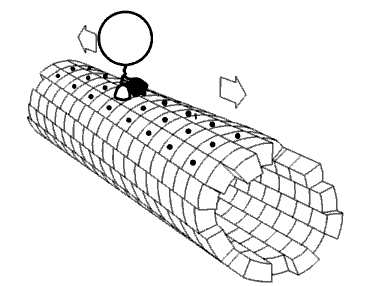
Photo from academic.microsoft.com
A variety of lipids that differ by their chains and headgroups are found in biomembranes. In addition to studying the overall membrane phase, determination of the structure, dynamics, and headgroup… Click to show full abstract
A variety of lipids that differ by their chains and headgroups are found in biomembranes. In addition to studying the overall membrane phase, determination of the structure, dynamics, and headgroup conformation of individual lipids in the mixture would be of great interest. We have thus developed, to our knowledge, a new approach using solid-state 31P NMR, magic-angle spinning, and chemical-shift anisotropy (CSA) recoupling, using an altered version of the recoupling of chemical shift anisotropy (ROCSA) pulse sequence, here penned PROCSA. The resulting two-dimensional spectra allowed the simultaneous measurement of the isotropic chemical shift and CSA of each lipid headgroup, thus providing a valuable measure of its dynamics and structure. PROCSA was applied to mixtures of phosphatidylethanolamine (PE) and phosphatidylglycerol (PG) in various relative proportions, to mimic bacterial membranes and assess the respective roles of lipids in shaping these bilayers. The results were interpreted in terms of membrane topology, lipid propensity to adopt various phases or conformations, and lipid-lipid miscibility. Our results showed that PG dictates the lipid behavior when present in a proportion of 20 mol % or more. A small proportion of PG is thus able to impose a bilayer structure to the hexagonal phase forming PE. We discuss the requirement for lipids, such as PE, to be able to adopt non-bilayer phases in a membrane.
Journal Title: Biophysical journal
Year Published: 2018
Link to full text (if available)
Share on Social Media: Sign Up to like & get
recommendations!